Transform your outdoor meals from basic camp food into wilderness cuisine with a portable spice kit, lightweight cooking gear, and smart meal planning. Even in Ontario’s peaceful park settings, creating memorable trail meals requires more than just packing sandwiches and granola bars. Master the art of one-pot cooking using dehydrated ingredients, learn to harness the subtle flavors of open-fire cooking, and discover how to pack ingredients that maximize nutrition while minimizing weight. Whether you’re embarking on a weekend hiking adventure or planning an extended backcountry expedition, proper trail cooking techniques can elevate your outdoor experience from mere sustenance to a highlight of your journey. The key lies in understanding how to balance weight, nutrition, and taste while respecting leave-no-trace principles and working with the natural elements at your disposal.
Essential Trail Cooking Gear
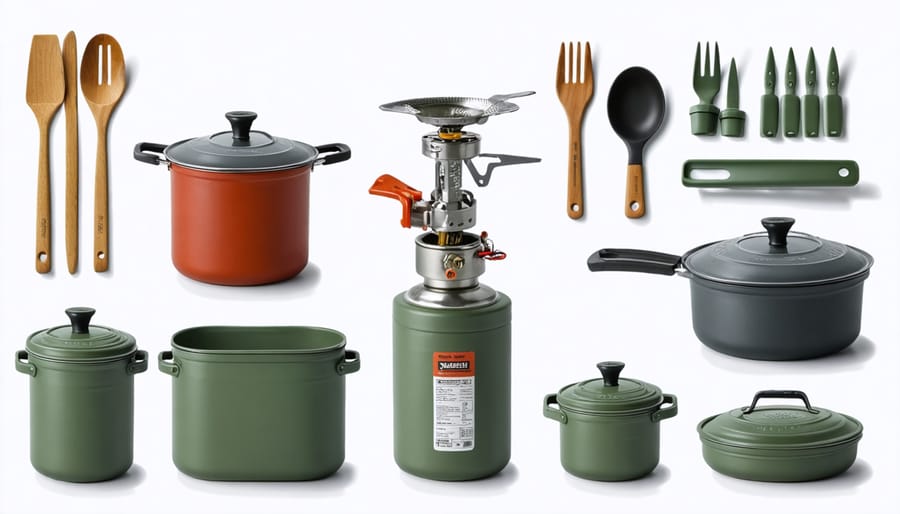
Lightweight Cooking Equipment
When it comes to cooking on Ontario’s trails, lightweight gear is your best friend. A compact canister stove is perfect for our diverse terrain – they’re reliable in both Algonquin’s dense forests and along the Bruce Trail’s rocky outcrops. Look for models weighing under 100 grams that fold down smaller than your morning coffee mug.
For cookware, titanium pots are worth the investment. They’re incredibly light and heat up quickly, saving both your back and your fuel. A 750ml pot usually does the trick for solo hikers, while groups might want to pack a 1.2L version. Pro tip: choose pots with graduated measurements on the side – they’ll double as measuring cups!
Don’t forget about eating gear! A long-handled spoon (affectionately known as a “spork” among trail veterans) and a collapsible bowl are all you really need. Many experienced hikers I’ve met on Ontario’s trails swear by wooden or bamboo utensils – they’re lightweight, don’t conduct heat, and won’t scratch your cookware.
Remember to pack everything in a waterproof stuff sack. Our province’s weather can be unpredictable, and keeping your cooking gear dry is essential for those tasty trail meals.
Food Storage Solutions
When it comes to keeping your trail food safe and fresh, proper storage is crucial – both for your enjoyment and the local wildlife’s well-being. Always pack your food in sturdy, airtight containers that can withstand being jostled in your backpack. Reusable plastic containers with secure snap-on lids work great for dry goods, while leak-proof silicone bags are perfect for wet ingredients.
In bear country (which includes many of Ontario’s wilderness areas), using a bear-resistant food canister is essential. These specialized containers are virtually impossible for bears to open and can protect your supplies while keeping wildlife safe. Remember to store your food at least 100 meters away from your campsite, preferably hung from a tree branch about 4 meters high and 2 meters away from the trunk.
For day hikes, consider using insulated food containers to keep your meals at safe temperatures. Pack perishables with ice packs in the summer, and don’t forget to bring odor-proof bags for your garbage. A handy tip: label your containers with contents and dates using masking tape – it’s amazing how similar dried ingredients can look after a few days on the trail!
Simple Yet Satisfying Trail Recipes
One-Pot Wonders
When you’re tired after a long day of hiking, nothing beats the simplicity of a one-pot meal. These trail-cooking champions minimize cleanup while maximizing flavor, perfect for those considering seasonal outdoor cooking considerations.
Start with a lightweight camping pot that’s about 2-3 liters in capacity. My go-to trail dinner is the classic pasta primavera – just bring pre-chopped veggies, quick-cooking pasta, and a packet of dried sauce mix. Add water, bring to a boil, and in 15 minutes, you’ve got a hearty meal that’ll warm your soul.
For breakfast lovers, try the ultimate morning hash: dehydrated potato flakes, pre-cooked bacon bits, and powdered eggs. Simply add hot water and stir until you’ve got a satisfying morning feast. Pro tip: pack some dried herbs from your garden to add an extra punch of flavor.
Another crowd-pleaser is the one-pot curry rice. Combine instant rice, curry powder, dried vegetables, and coconut milk powder in your pot. Add water, simmer, and watch as your campsite fills with aromatic spices. For protein, toss in some pre-cooked chicken or chickpeas.
Remember to measure and pack your ingredients in advance using reusable bags. This not only saves space but also reduces waste on the trail. Keep your meals simple yet satisfying – your tired muscles (and whoever’s washing up) will thank you!
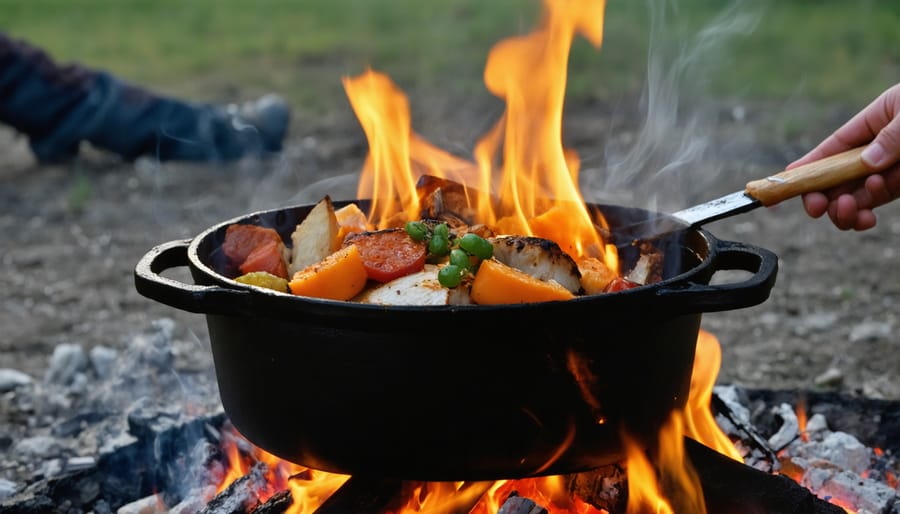
Foil Packet Meals
Foil packet meals are a backpacker’s best friend, combining easy prep with minimal cleanup. Just wrap your ingredients in heavy-duty aluminum foil, place them on hot coals, and let the campfire work its magic! One of our favorite combinations is locally-caught Ontario trout with baby potatoes, carrots, and a pat of butter. Simply season with salt, pepper, and fresh herbs, then seal tightly in a double layer of foil.
For vegetarians, try wrapping sweet corn, mushrooms, and bell peppers with a drizzle of olive oil and a sprinkle of paprika. The steam created inside the packet perfectly cooks the veggies while keeping them tender and flavorful. Pro tip: Create a small tent at the top of your foil packet to allow steam to circulate.
Looking for something heartier? Mix pre-cooked ground beef or chickpeas with cubed potatoes, onions, and your favorite BBQ sauce for a satisfying wilderness meal. Remember to flip your packets every 5-7 minutes for even cooking, and always use tongs to handle them – they get incredibly hot!
For dessert, nothing beats a banana boat: split a banana lengthwise (keeping the peel on), stuff with chocolate chips and mini marshmallows, wrap in foil, and heat until melty. It’s a gooey campfire treat that’s sure to become a trail tradition!
Trail Mix and Snacks
When you’re hitting the trails in Ontario, having the right snacks can make all the difference in keeping your energy levels up. A well-planned trail mix is like having a pocket full of fuel that’s both delicious and nutritious.
Create your own signature mix by combining equal parts of nuts (almonds, walnuts, or cashews), dried fruits (cranberries, raisins, or apple chips), and seeds (pumpkin or sunflower). For an Ontario twist, add locally sourced dried blueberries or maple-glazed pecans. Remember to portion your mix into small resealable bags to prevent overindulging and minimize waste on the trail.
Beyond trail mix, pack easy-to-carry snacks that won’t melt or crumble in your backpack. Energy bars, beef jerky, and sturdy fruits like apples and oranges are reliable choices. In cooler weather, dark chocolate makes an excellent mood-boosting treat. For day hikes, fresh vegetables like baby carrots and snap peas offer refreshing crunch and hydration.
Pro tip: Keep a separate “quick-access” snack pocket in your backpack for items you’ll want to munch on while walking. This prevents you from having to dig through your pack every time hunger strikes. Also, consider packing a few extra portions – you never know when a fellow hiker might need an energy boost, and sharing snacks is a great way to make friends on the trail!
Cooking Techniques in the Wild
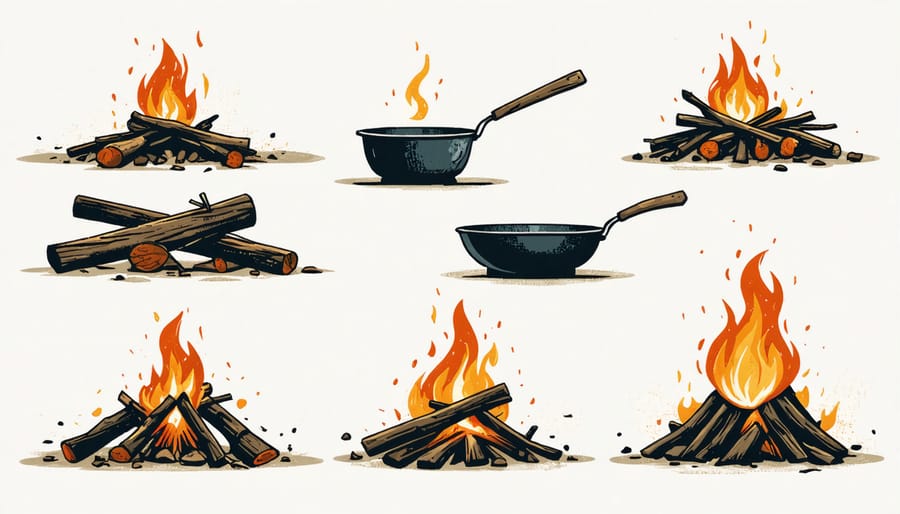
Campfire Cooking Basics
Building a proper campfire is an art that connects us to traditional cooking methods while offering a practical way to prepare delicious meals in the wilderness. Start by choosing a designated fire pit or creating a safe cooking area by clearing a 10-foot diameter space of any flammable materials.
Arrange your firewood in the classic teepee structure, starting with small, dry twigs (kindling) in the center, surrounded by progressively larger sticks. Once your fire is going strong, let it burn down to hot coals – this is your ideal cooking temperature. For consistent heat, maintain a combination of flames and glowing embers.
Pro tip: Pack a compact grill grate in your backpack. It’s a game-changer for stable cooking and prevents your pots from tipping over. Position your cookware about 4-6 inches above the coals for optimal heat control. If you’re cooking directly on the coals, wrap food in aluminum foil with a double layer to prevent burning.
Remember to keep water nearby for safety, and never leave your fire unattended. When you’re done cooking, thoroughly extinguish the fire by drowning it with water and stirring the ashes until they’re cold to the touch. This helps protect our beautiful Ontario wilderness for future adventurers.
Portable Stove Cooking
Portable stoves are a game-changer for trail cooking, offering convenience and reliability even in Ontario’s most remote corners. Whether you’re hiking the Bruce Trail or camping in Algonquin Park, a good camping stove is your ticket to hot, satisfying meals.
Start by setting up your stove on a flat, stable surface away from dry leaves and branches. Most modern camping stoves come with built-in windscreens, but if yours doesn’t, create a makeshift barrier using your backpack or a large rock to shield the flame from gusts.
Pro tip: Always test your stove before leaving home, and carry extra fuel. Ontario’s weather can be unpredictable, and cold temperatures can increase fuel consumption. Keep your fuel canister warm by storing it in your sleeping bag at night – cold fuel doesn’t perform well!
When cooking, use a heat diffuser to distribute warmth evenly and prevent hot spots that can burn your food. Keep the flame at medium rather than full blast; you’ll use less fuel and have better control over your cooking. For simmering, many experienced trail cooks swear by the “stack method” – placing a pot on top of another to create a double-boiler effect.
Remember to practice Leave No Trace principles: avoid washing dishes directly in water sources, pack out all fuel canisters, and never leave your stove unattended while it’s lit. With proper care and attention, your portable stove will be your reliable trail kitchen companion for years to come.
Leave No Trace Cooking Practices
Minimizing Environmental Impact
When cooking on Ontario’s trails, it’s crucial to minimize our impact on the delicate ecosystems we enjoy. Pack lightweight, reusable containers instead of disposable ones, and opt for biodegradable soap when cleaning up. Remember the “pack it in, pack it out” principle – every wrapper, scrap, and leftover should leave the trail with you.
Consider using a lightweight camping stove rather than building fires, especially during dry seasons or in areas with changing wilderness conditions. If you do build a fire, use only designated fire pits and locally sourced or brought firewood to prevent spreading invasive species.
Plan your meals carefully to minimize food waste. Pre-portion ingredients at home and use resealable containers that can be washed and reused. When washing dishes, strain your dishwater through a fine-mesh sieve to catch food particles, and dispose of grey water at least 200 feet from any water source.
Choose local, package-free ingredients when possible, and consider dehydrating your own meals to reduce packaging waste. These small actions add up to make a big difference in preserving Ontario’s beautiful wilderness for future generations.
Proper Cleanup and Disposal
Leave no trace is more than just a catchy phrase – it’s our responsibility as outdoor enthusiasts. After enjoying your trail-cooked meal, pack out everything you packed in, including food scraps, packaging, and used foil. Even biodegradable items like apple cores should come with you, as they can attract wildlife and alter their natural feeding patterns.
To clean your cooking gear, bring biodegradable soap and wash dishes at least 200 feet away from any water sources. Strain your dishwater through a fine-mesh sieve to catch food particles, and pack these out with your other waste. Scatter the strained water widely to minimize impact.
For campfire cleanup, ensure all embers are completely extinguished by dousing them thoroughly with water and stirring until cold to the touch. Never bury coals or food waste – this can harm wildlife and create hazards for other campers.
Pro tip: Keep a dedicated cleanup kit with a small scraper, biodegradable soap, and a microfiber towel. These lightweight items make cleanup a breeze while helping preserve Ontario’s beautiful wilderness for future adventures.
Trail cooking in Ontario’s parks is more than just a necessity – it’s an adventure that adds an extra layer of enjoyment to your outdoor experience. From the sizzle of fresh-caught fish on a portable stove to the aroma of campfire-baked bannock wafting through the trees, outdoor cooking creates memories that last a lifetime.
Throughout this guide, we’ve explored essential equipment, time-tested techniques, and delicious recipes that work perfectly in Ontario’s diverse landscapes. Remember that successful trail cooking starts with proper planning, from packing lightweight, nutritious ingredients to choosing the right cooking method for your adventure level.
Whether you’re a seasoned backpacker or planning your first camping trip, don’t be afraid to start simple and expand your outdoor culinary skills gradually. Try starting with one-pot meals and work your way up to more elaborate campfire creations. Keep in mind that practicing Leave No Trace principles while cooking helps preserve our beautiful parks for future generations.
The satisfaction of preparing a hot, delicious meal surrounded by Ontario’s natural beauty is truly unmatched. So pack your gear, grab your ingredients, and head out to discover the joys of trail cooking. Your next outdoor feast awaits in Ontario’s magnificent parks and trails – where every meal is served with a side of adventure and a generous helping of fresh air.

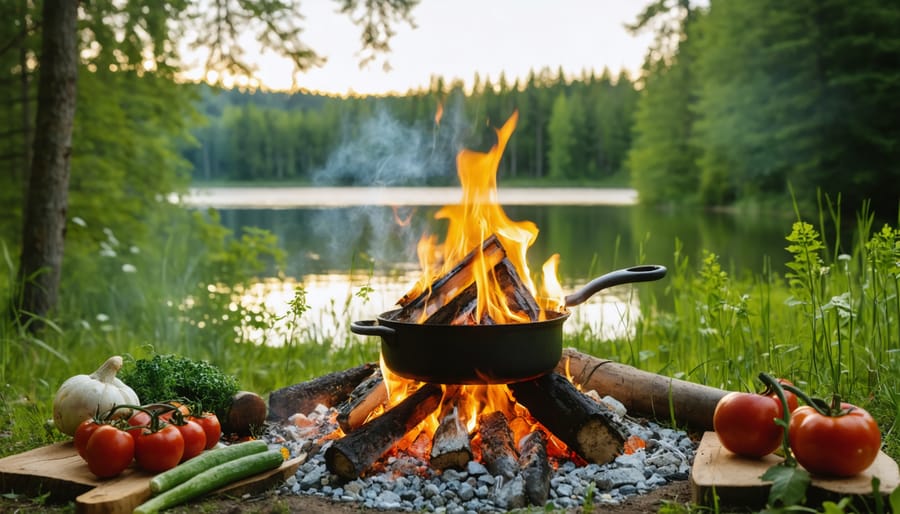







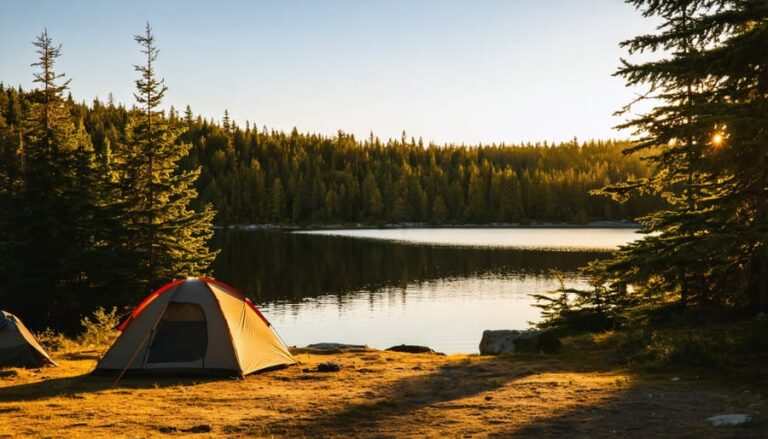
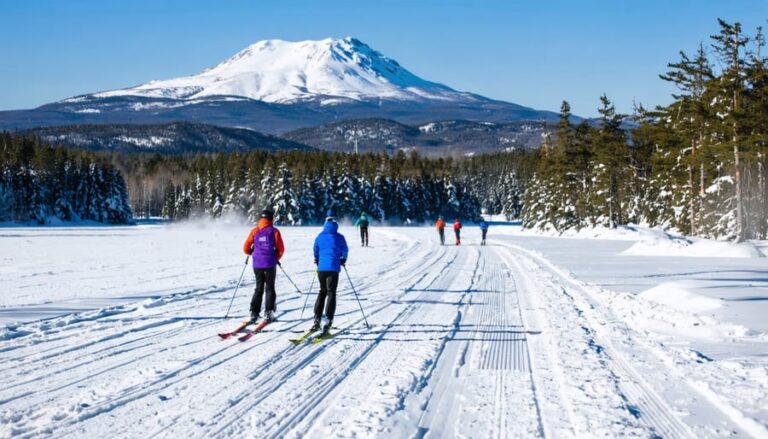


+ There are no comments
Add yours